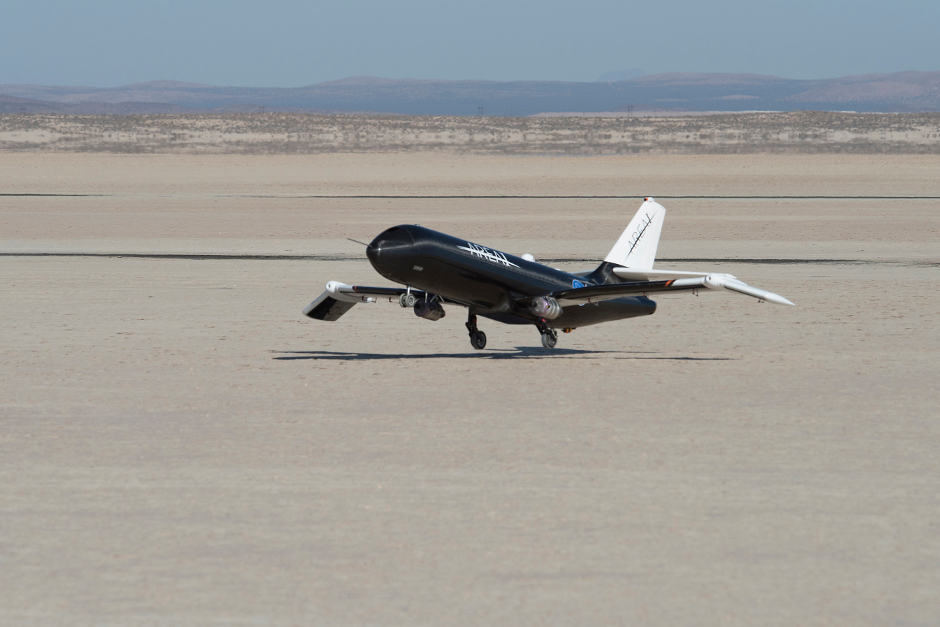
The flights which took place at NASA’s Armstrong Flight Research Center in California, are part of the SAW (Spanwise Adaptive Wing) project that aims to validate the use of a lightweight material to fold the outer portions of aircraft wings and their control surfaces to optimal angles in flight.
SAW - a joint effort between Armstrong, NASA’s Glenn and Langley Research Centers, Boeing Research & Technology, and Area-I Inc. in Kennesaw, Georgia - may produce multiple in-flight benefits to subsonic and supersonic aircraft in the future.
Previous efforts to fold wings in flight has been dependent on conventional motors and hydraulic systems, which can be cumbersome to the aircraft. According to NASA, the SAW project intends to obtain a wide spectrum of aerodynamic advantages in flight by folding wings through the use of a shape memory alloy, which is built into to an actuator on the aircraft and folds the outer portion of an aircraft’s wings in flight.
The recent series of flight tests at Armstrong demonstrated the material’s application and use, by folding the wings between zero and 70 degrees up and down in flight.
“Folding wings has been done in the past, but we wanted to prove the feasibility of doing this using shape memory alloy technology, which is compact, lightweight, and can be positioned in convenient places on the aircraft,” said SAW Co-Principal Investigator Othmane Benafan.
On subsonic aircraft the potential aerodynamic benefit of folding the wings includes increased controllability, which may result in a reduced dependency on heavier parts of the aircraft, including the tail rudder.
One of the most significant potential benefits of folding wings in flight, however, is with supersonic flight.
“There’s a lot of benefit in folding the wing tips downward to sort of ‘ride the wave’ in supersonic flight, including reduced drag. This may result in more efficient supersonic flight,” SAW Principal Investigator Matt Moholt said. “Through this effort, we may be able to enable this element to the next generation of supersonic flight, to not only reduce drag but also increase performance, as you transition from subsonic to supersonic speeds. This is made possible using shape memory alloy.”
The shape memory alloy is triggered by temperature, and works by using thermal memory in a tube to move and function as an actuator. Upon heating, the alloy activates a twisting motion in the tubes, which moves the wing’s outer portion up or down.
To test the technology, NASA turned to Area-I to operate one of its remotely-controlled Prototype Technology-Evaluation Research Aircraft (PTERA).
For the flight-tests, PTERA took off with its wings at a level, zero-degree deflection. The testbed was flown in a large “racetrack” pattern, providing long legs of flight in which the necessary manoeuvres for the research could be done. During these manoeuvres, on-board controllers heated and cooled the SAW actuators, folding the wing panels to different angles between zero and 70 degrees.
For the first two flights, the wing tips were rigged to fold downward, while later flights featured rearranging the hardware to achieve 70-degree upward deflection. Wing-folding manoeuvres were achieved in flight within three minutes each.
Follow-on SAW flights will expand the functionality of the SAW system, to be able to fold wings 70 degrees up and down in a single flight. Tests are also expected to take place on the wing of an F-18.
Folding wings in flight is an innovation that had been studied using aircraft in the past, including the North American XB-70 Valkyrie in the 1960s.





Red Bull makes hydrogen fuel cell play with AVL
Formula 1 is an anachronistic anomaly where its only cutting edge is in engine development. The rules prohibit any real innovation and there would be...